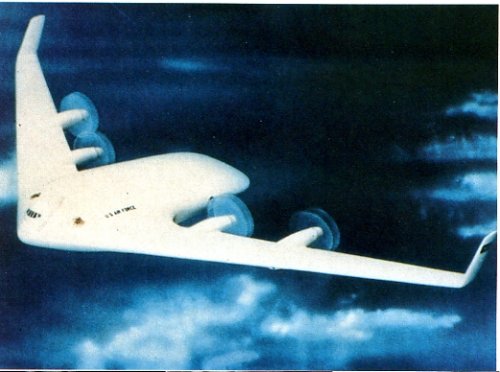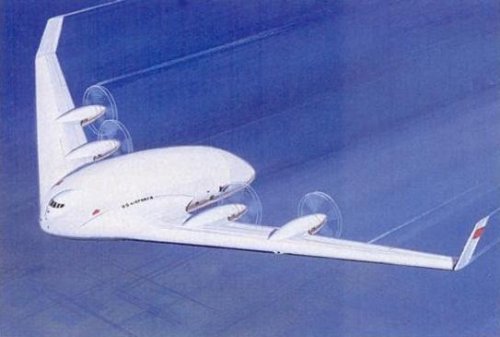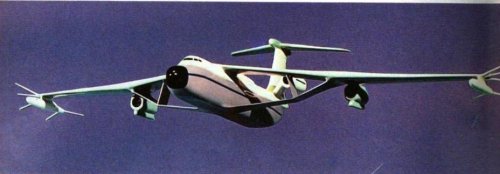- Joined
- 22 January 2006
- Messages
- 3,963
- Reaction score
- 1,349
From Spanish popular science magazine in the 80's
LFC for Laminar Flow Control
Some data:
4xPropfan engines
Mach 0,80
weight: 75 ton
span: 76 m
lenght: 41 m
The same picture is on John D. Busick's "Future Flight" (TAB books) on page 130. The picture caption is really poor:
"A militarized version of a spanloader or flying wing (courtesy Lockheed Georgia)"
LFC for Laminar Flow Control
Some data:
4xPropfan engines
Mach 0,80
weight: 75 ton
span: 76 m
lenght: 41 m
The same picture is on John D. Busick's "Future Flight" (TAB books) on page 130. The picture caption is really poor:
"A militarized version of a spanloader or flying wing (courtesy Lockheed Georgia)"



